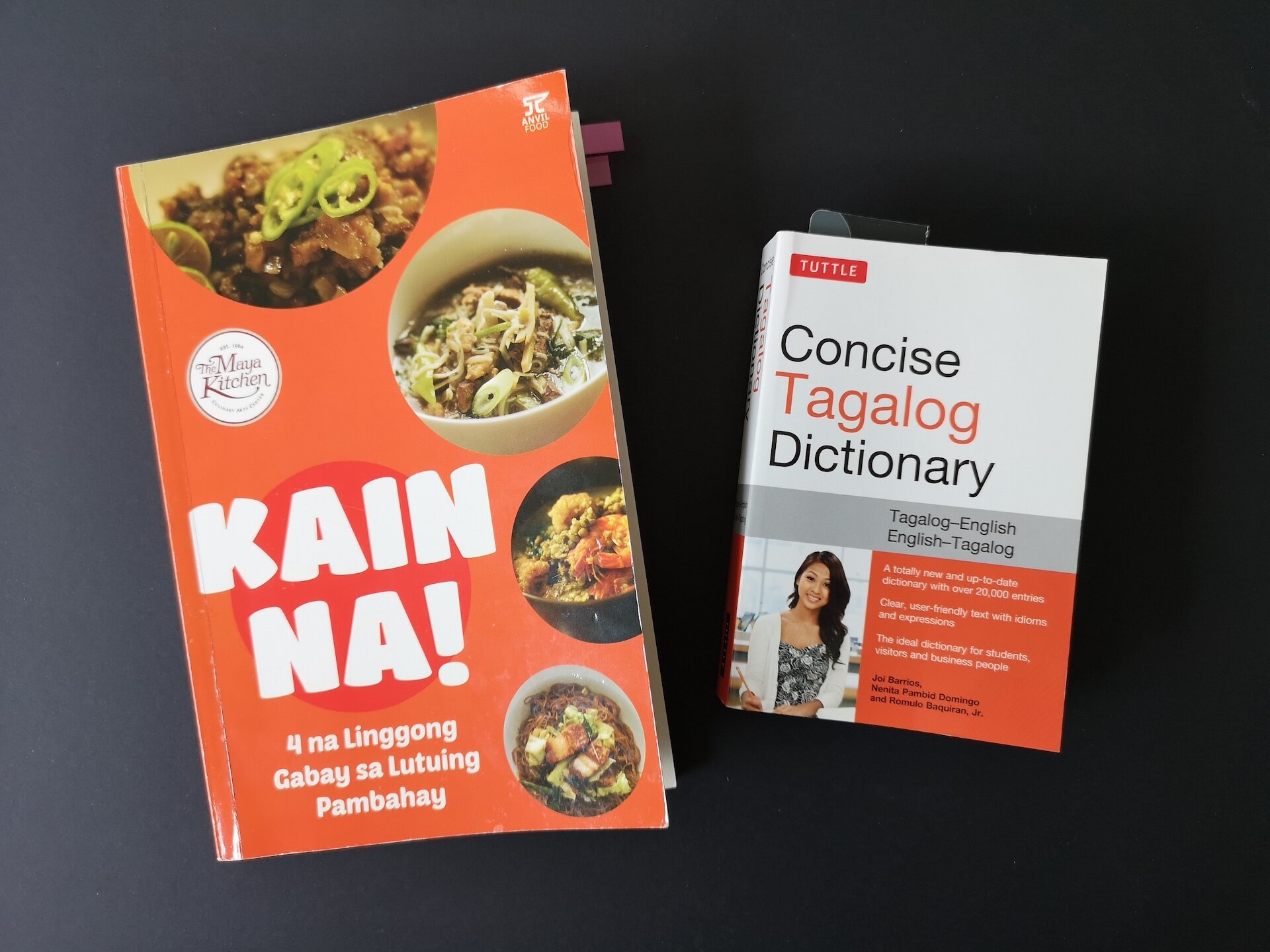Kain Na! 4 na Linggong Gabay sa Lutuing Pambahay (A Four-Week Guide to Cooking At Home) by The Maya Kitchen
With most of the world instructed to shop for groceries once a week, the idea of planning to feed ourselves (and the people around us) has admittedly become daunting. When was the last time we paid this much attention to meal planning?
I could simply say that Filipino people, in general, have always been ready for a ‘pandemic approach’ to food, in terms of rationing and shopping. But I’d like to go beyond that and pick out a few sections from this practical little book published by the famed Maya Kitchen Culinary Arts Center (in many ways, the Philippines’ version of America’s Test Kitchen) that help illustrate how planning for what to cook and eat with a no-waste mindset - while also providing variety and excitement - has always been an intrinsic part of the Filipino culinary identity.
I picked this up for P195 from National Bookstore some time ago, and was sold in ten seconds from the back cover.
“Hindi biro and mag-isip ng mga pagkaing ihahanda para sa tatlong beses sa isang araw, pitong araw sa isang linggo.” (It’s no joke to think of food to prepare three times a day, seven days a week.) I agree!
Plus, I love an illustrated cookbook!
On page 3, the Maya Kitchen team sends their encouragement.
No shame in admitting I needed some help. Can’t really recall the last time I had to translate the words “mungkahi”, “pagtugma” or “kaigaigayang” into English, though I understand what they mean!
From the foreword, Kain Na, they say, is the answer to your problems. You’ll find suggestions for viands for breakfast, lunch and dinner for four weeks. You may follow the menu, or switch up the viands according to your family’s preferences. The recipes are easy to follow and understand, and is enough for 6 to 8 people (my favourite part). This cookbook also contains information on coordinating foods, nutrition, how to use leftovers, etc. The Maya Kitchen, they say, will continue its mission to help make cooking an enjoyable experience for everyone.
Week 1
Today I learned that “estrelyadong itlog” meant a fried egg, sunny-side up. I have never called it that. 😂
For breakfast on Friday, they suggest the eggs with fruit, hotdogs, bread, and coffee or hot chocolate. Say what you will, but that’s a good breakfast.
For lunch on Tuesday, try asparagus soup to start. Since there isn’t a recipe, I presume this refers to the powdered cream of asparagus soup mix widely available in the Philippines, a culinary relic of American occupation. Next follows a recipe for steak teppanyaki, which really only has a similar cooking method to the original Japanese teppanyaki as its strongest connection, in my opinion. How it came to be a common dish in the Philippines, and when, is something to look into.
While we’re on the gravy train, let’s take a look at the suggestion for dinner on Wednesday - baked macaroni, fruity coleslaw, garlic bread, and fruit. I imagine my grandmother’s baked macaroni is pretty close to this recipe, but with a lot more cheese (I’m surprised this doesn’t have much!). Note the green chilies, ground beef, sweet ham, tomato sauce and ketchup in the red sauce, and evaporated milk, chicken stock, and canned cream of mushroom soup in the bechamel.
Fruity coleslaw, however, takes the cake. This recipe calls for one head of cabbage, 1/4 cup of sugar, 1-2 cups of mayonnaise, a cup of grated carrots, 4 hotdogs (boiled and cubed), a cup of grated cheese, pineapple tidbits, and green peas (if you like). I can’t even.
Try finding that someplace else!
Week 2
On Tuesday, the breakfast menu suggests fruit, fried tuyo (sun-dried fish, usually herring), tsamporado (rice porridge with cacao), and coffee or milk. There isn’t a recipe provided for the rice porridge, my guess is they assume people would buy pre-portioned tsamporado packets that typically require adding only water and milk.
Lunch on Friday sounds delicious. A more traditional Filipino meal, with paksiw na isda (fish stewed with vinegar and vegetables), munggo guisado (a soupy, savoury mung bean dish), rice and fruit.
Realistically, Monday’s suggested dinner is closest to what I would actually have had at home - a relatively simple set composed of a main (fried chicken), some type of vegetable as a side (pechay guisado, or sautéed Chinese cabbage) and rice, with optional fruit.
Week 3
I used to really love canned pork and beans, until I realized that other kinds of beans could actually taste, well, beany - and not completely dependent on the syrupy, ketchup-y sauce meant to resemble a slow-cooked pot of actual pork with molasses-tinged, tender, not-mushy beans. Another American surplus item that’s climbed to the top the inexpensive “de lata” list.
There is a suggestion to have batchoy (a thick, savoury noodle soup with various cuts of pork), ukoy (a simplified shrimp and vegetable fritter), and tsampoy na sampalok (candied tamarind) for lunch later in the week. If I had that for lunch on a weekday, it’d have to be a pretty special day.
For dinner, one night’s menu suggests nilagang baboy (pork stewed with vegetables), rice and a coconut and sago palm dessert called “Pearl Delight”. Also something I could picture having!
Week 4
Breakfast with daing na bangus and sinangag would be perfect. Lunch with macaroni soup and “Easy Ala Cubana” (a.k.a. arroz ala cubana) made with ground beef, tomatoes, potatoes and saba bananas sounds even better. And finally, Hainanese chicken, rice and maja blanca (a luscious coconut and corn pudding I love) to top off the month, is something I would get behind.
Enjoy your #quarantinecooking journey!









